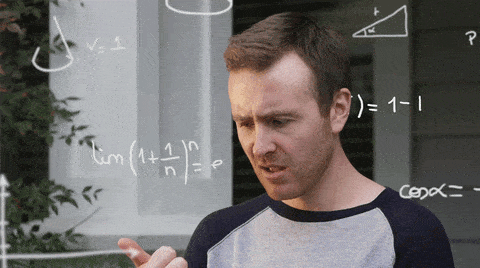Many millennials have heard about bitcoin and may even own some, but this changes when you go outside the age brackets of 20 to 50. Your children may be too young to care about money, and your grandparents may trust banks and your local currency too much to switch to “internet money.” Don’t worry, let’s unpack this innovative technology together and learn how to explain bitcoin in a slightly more interesting way.
First things first: What are bitcoin and blockchain technology?

When we research about the definitions of bitcoin and blockchain technology, we reach the standard explanation that:
“Bitcoin is a decentralized digital currency without a central bank or single administrator that can be sent from user to user on the peer-to-peer bitcoin network without the need for intermediaries. Furthermore, a blockchain is a growing list of records, called blocks, that are linked using cryptography. Each block contains a cryptographic hash of the previous block, a timestamp, and transaction data.”
Okay, that’s a lot to take in—for both adults and children.
Let’s play a game 🎲
Instead, we can explain the technology in a more playful, “bitcoin for dummies” way: Alex, Ben, Cindy, and Daisy have made a plan to play Monopoly at Cindy’s place. However, when Cindy’s cousins came over last weekend, they misplaced all the dollar bills! The group has then agreed to keep track of the money flow by having everyone write down every payment on a piece of paper.
This is what the record may look like after a few rounds:
| Alex | Ben |
Current total: $20 |
Current total: $60 |
| Cindy | Daisy |
Current total: $80 |
Current total: $40 |
The group compares notes every 15 minutes or so to make sure that everyone’s on the same page and that no payments are missed. This is extremely important because the players have to make sure that the game doesn’t get affected when a player cheats and makes up numbers to favor himself/herself in the game.
An example of an inaccurate record may look like this (pay attention to the current totals of Ben and Cindy):
| Alex | Ben |
Current total: $20 |
Current total: $330 |
| Cindy | Daisy |
Current total: -$190 |
Current total: $40 |
Instead of “$30” from the first picture, Ben claimed that Cindy gave him “$300,” which immediately makes him the big winner and Cindy the poor bankrupt player. This is exactly why the group has to check in every 15 minutes to make sure that everyone’s records are identical.
👉 Does this game of Monopoly remind you of blockchain in any way? Yes, it resembles blockchain technology in many ways:
- The payment records represent blocks of information
- The paper records represent a network of computers sharing the same transaction records
- The 15-minute checkpoints are an analogy of the confirmations and cryptographic hash of the previous block
- Alex, Ben, Cindy, and Daisy represent the peer-to-peer nature of cryptocurrency. There are no banks or a central authority involved!
But money means different things for baby boomers

For many baby boomers and their parents, money was earned with blood and tears, and nothing feels more satisfying than holding cash in your hands. Practices around the world have shown that older generations may have a slight preference for physical money over money that is intangible.
But there’s one thing that’s been valuable and highly coveted through generations: gold. Bitcoin may be an abstract concept to many, but gold? We all know it’s a store of value.
So what if we tell our grannies that they can now use gold to buy bitcoin? That crypto is rising in importance comparable to that of gold—arguably the most tangible form of value? Maybe then they’ll raise an eyebrow and want to listen to you.
Next up: Why do people use bitcoin?
People use bitcoin for a variety of purposes. While people in developed countries may use bitcoin as a form of investment, people in emerging markets may do so to preserve their wealth from intense local inflations, or to send funds to their family members back home.
But let’s put this in simple terms.
Let’s say a 10 year-old girl named Alice wants to sell a book that she no longer reads. She knows about an e-commerce website so she uploaded a photo of her book and named a price. Luckily, she was able to sell the book very soon after the initial posting, but she was discouraged by the 10% fee that the website charges all of its sellers. If we tell Alice that blockchain is this magical technology where she can sell directly to her buyer without paying 10% to a middle person, how thrilled would she be?
Know that you’re not alone. Here’s how three Paxful moms have attempted to explain bitcoin to their kids.

Alternatively, you could tell your kids or grannies that cryptocurrency allows you to send money to your parents who are currently retired in South Africa (assuming you’re living somewhere else). There is no longer a need for your money to travel through the heavy gates of banks and suffer through high processing fees. Instead of days or even weeks, your parents will receive the money in a matter of minutes.
Will bitcoin last?
We all know that for 11 years and counting, bitcoin has shown the world how cryptocurrency is changing the global financial landscape. Emerging markets such as Nigeria, Colombia, India, and Venezuela are among some of the countries with the most active traders on Paxful, and these countries are likely to continue showing the rest of the world what bitcoin is capable of doing.

In different corners of the world, bitcoin is becoming increasingly accepted in everyday stores and restaurants, and the booming number of bitcoin ATMs across the globe is another encouraging sign that cryptocurrency is disrupting mainstream currencies.
Bitcoin is here to stay. Let’s embrace it and educate others about this technology!
How have you been explaining bitcoin to people outside of your generation? Let us know in the comments below!